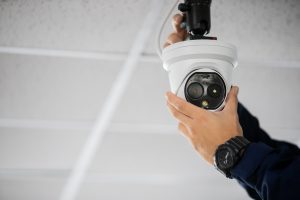In the world of television reception, ensuring a clear and reliable signal is crucial for an optimal viewing experience. TV aerial amplifiers play a significant role in enhancing signal strength and overcoming potential obstacles that can disrupt TV reception. In this article, we will explore in detail what TV aerial amplifiers do, when they are necessary, and provide guidance on how to choose the right one for your specific needs.
What is a TV Aerial Amplifier?
A TV aerial amplifier, also known as a signal booster or preamplifier, is a device designed to enhance the strength of TV signals received by your antenna. It operates by amplifying weak signals, compensating for signal loss caused by long cable runs, splitter distribution, or obstacles such as tall buildings or hills that may impede signal reception.
When Do You Need a TV Aerial Amplifier?
Distance from the Broadcast Tower: If you live far away from the nearest broadcast tower, the TV signals received by your antenna may be weak by the time they reach your TV set. In such cases, a TV aerial amplifier can help boost the signal strength, compensating for the long distance and ensuring a stable reception.
Signal Splitting: When you distribute your TV signal to multiple televisions within your home using splitters, each split results in a loss of signal strength. A TV aerial amplifier can offset this loss by amplifying the signal before it is distributed, ensuring that each TV receives a strong and reliable signal.
Overcoming Obstacles: Physical obstacles like tall buildings, dense vegetation, or hilly terrain can weaken TV signals. In situations where the line-of-sight between your antenna and the broadcast tower is obstructed, a TV aerial amplifier can help overcome these obstacles by boosting the signal and improving reception quality.
Choosing the Right TV Aerial Amplifier
When selecting a TV aerial amplifier, consider the following factors:
Signal Gain:
The signal gain of an amplifier determines the amount by which the signal is boosted. It is important to choose an amplifier with an appropriate gain level for your specific requirements. Higher gain does not always equate to better performance, as excessive amplification can cause signal distortion or interference.
Noise Figure:
The noise figure represents the amount of unwanted noise introduced by the amplifier. A lower noise figure indicates better performance, as it means the amplifier adds less noise to the signal. Look for amplifiers with low noise figures to maintain a clean and clear signal.
Compatibility:
Ensure that the TV aerial amplifier you choose is compatible with your antenna system. Check the connector type and impedance (usually 75 Ohms) to ensure a proper match with your existing setup.
Powering Options:
TV aerial amplifiers require power to operate. Some models are powered through the antenna cable (phantom powered), while others may require a separate power supply. Consider the powering options available and choose one that suits your setup.
Conclusion:
TV aerial amplifiers play a vital role in enhancing TV signal strength, especially in situations where weak signals, signal splitting, or physical obstacles can degrade reception quality. By understanding when and why you might need a TV aerial amplifier, you can make an informed decision and ensure a reliable and uninterrupted viewing experience.
When choosing a TV aerial amplifier, consider factors such as signal gain, noise figure, compatibility, and powering options to ensure the best performance for your specific setup. By investing in the right TV aerial amplifier, you can enjoy a stronger and more consistent TV signal, unlocking the full potential of your television viewing.
At TV Local Scotland, we provide expert guidance and a wide range of TV aerial solutions to meet your specific needs. Contact us today for more information.





